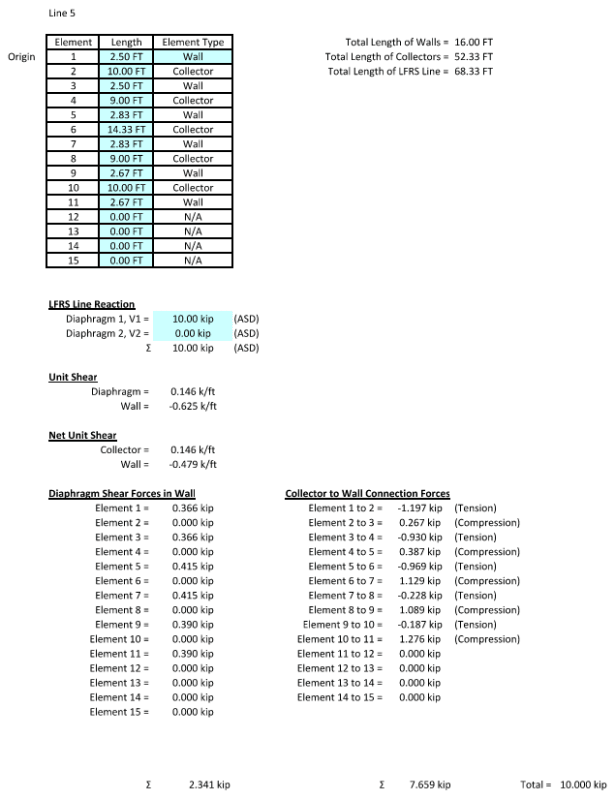I ran a collector force diagram against a line of shear walls/collectors and got the overall diagram to balance out to zero at the end of the resisting line.
However, the connection forces for the collectors do not change signs in some locations (each end has the same positive or negative value).
I'm used to seeing the collector have compression at one end and tension at the other (or the reverse when wind loads are reversed). Does this mean the diagram is wrong even though the total loads balance out to zero? How should I handle a collector with end connection forces in the same direction for each segment?
However, the connection forces for the collectors do not change signs in some locations (each end has the same positive or negative value).
I'm used to seeing the collector have compression at one end and tension at the other (or the reverse when wind loads are reversed). Does this mean the diagram is wrong even though the total loads balance out to zero? How should I handle a collector with end connection forces in the same direction for each segment?

